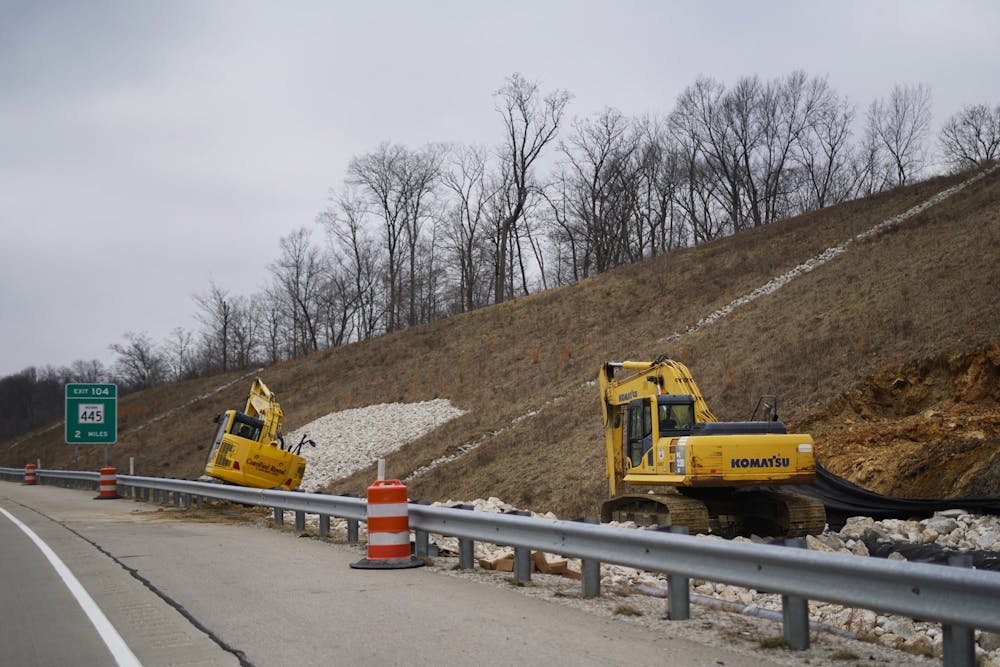Indiana might be the "Crossroads of America," but the state's aging infrastructure and poor climate change preparation should make residents concerned about its future.
Despite increased funding for road repairs and piping replacements in the past three years, Indiana must invest much more to make its infrastructure system safer and more reliable in the long term, with a particular emphasis on water infrastructure, public transit and climate change mitigation.
About 12% of Indiana’s roads are in poor condition, 7% of its bridges structurally deficient and 240 of its dams high-hazard potential, according to a 2017 report from the American Society of Civil Engineers. ASCE estimates that Indiana will have $7.5 billion in drinking water needs and $7.2 billion in wastewater infrastructure needs over the next 20 years.
Gov. Eric Holcomb signed an infrastructure bill in 2017, which provided $1.2 billion for road and bridge repair. Additionally, a 2019 bill provided $20 million annually for water infrastructure investment, and last month INDOT announced $120 million in funding for rural roads and bridges. Still, it is not enough.
While Indiana has proven willing to make investments, state officials should address long-term needs such as climate change mitigation, safe drinking water or reliable public transit. The state’s response to infrastructure issues has been underfunded compared to ASCE’s estimates.
Climate change threatens to put new stresses on already aging infrastructure with increased rainfall and temperatures. The Midwest Economic Policy Institute reports that the consequences of climate change reduce the lifespans of pavements, deteriorate bridges, threaten dams and flood wastewater facilities. In order to prevent further damage, Indiana should invest in repairing this infrastructure now, while accounting for increased rainfall and temperatures in new construction.
The problem isn't likely to be solved at the federal level. ASCE's 2017 report gave the United States an overall grade of D+, meaning large portions of the system are significantly deteriorated. Even though both President Donald Trump and Speaker of the House Nancy Pelosi agree the nation needs greater infrastructure investment, talks at the national level have stalled, leaving states without new federal funding.
In the long run, delaying infrastructure needs only escalates the costs and risks associated with it. Nearly 60% of Indiana dams were constructed in the late 1950s and early 1960s. Designed for a 50-year lifespan, it’s no surprise that many are in critical shape and some have breached in recent years. As rainfall increases due to climate change, many of these dams are now under increased threat.
The state must close its funding gap for drinking water needs. Both copper and lead are byproducts of aging water pipes, and neglecting to address it could prove problematic for public health.
Serious investments in the state’s public transit system would go a long way in improving its infrastructure. Instead of attempting to cut funding for IndyGo, Indianapolis’ public transportation operator, Indiana should be looking to expand public transportation options. Increased funding for passenger trains and buses would provide Indiana residents with greater travel options at a cheaper cost while decreasing the state’s greenhouse gas emissions.
CNBC ranked Indiana highest in the country last year for infrastructure in its annual "America's Top States for Business" report. However, CNBC give more weight to business-focused metrics not used by ASCE, such as total U.S. population within 500 miles. Importantly, CNBC neglected to include climate change preparation in their rankings. The ASCE report accounts for future needs, while CNBC focuses on present data. Indiana did not receive a grade from the ASCE, but Kentucky, ranked second and given an A by CNBC, scored only a C-.
Given the U.S.’s overall dire infrastructure projections, the CNBC ranking is hardly a cause for celebration. Instead, Indiana should double-down on its efforts and lead the country through its infrastructure slump.
With aging infrastructure, whether it be dams, piping or roads, Indiana is throwing its future into question, especially considering the consequences of climate change. If the state hopes to succeed in a 21st-century economy, it must move to make these serious investments now, rather than wait for more problems to arise.






